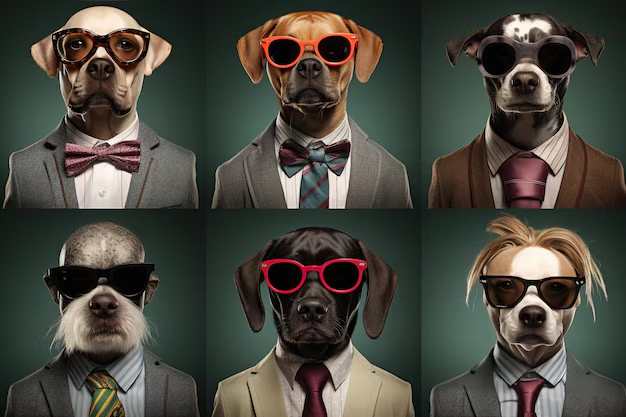Humanisation Vs. Anthropomorphism in Pets

Pet product marketers and manufacturers must distinguish anthropomorphism from humanisation. Both may boost brand visibility and customer loyalty, but they need different approaches.
Despite their apparent similarities, humanisation and anthropomorphism have different but complementary effects on the pet products business, especially on the creation and promotion of products. To develop successful products and campaigns that appeal to pet owners, it is essential to grasp the distinctions between these ideas.
Humanisation
The term “humanisation” refers to the phenomenon of treating animals more like family members rather than objects of desire or necessity. This has been on the rise over the last decade, thanks to changing public opinion and a greater understanding of the importance of animal welfare. More and more people are beginning to see animals as members of the family, and as a result, they are demanding more stringent care and feeding protocols for their pets. Because of this change, pet products are now considered premium, with an emphasis on high-quality ingredients, packaging, and production methods to satisfy picky pet owners.
As a result of this trend, pet product manufacturers have started marketing items that are similar to human trends. Some of these new possibilities include being organic, not genetically modified, gluten-free, and obtained sustainably. But humanising pet products is more than just about the products per se; it’s a way of life that reflects the owners’ principles on health, well-being, and moral living.
Anthropomorphism
On the other hand, anthropomorphism happens when people attribute human traits, feelings, and goals to animals. This mental phenomenon happens when people who own pets tend to see them from a human perspective, thinking and feeling the same way they do. Despite the positive effects on owner-pet relationships, this practice has the potential to mislead people about animals’ true needs and habits.
Anthropomorphism is a powerful strategy in marketing. Pet advertisements that include realistic emotions or actions may attract more customers, strengthening their loyalty to the company. An example of an emotionally charged visual that might appeal to pet owners is an advertisement depicting a dog “smiling” after consuming a certain type of food. While using this strategy, marketers should be careful not to generate unreasonable expectations about pet diet and care.
Please refer – https://onlykutts.com/index.php/2024/07/30/anthropomorphism-with-pets/
Separating humanisation from anthropomorphism
Marketers and producers of pet products must differentiate between anthropomorphism and humanisation. Both trends have the potential to increase brand awareness and consumer loyalty, but they need distinct methods for implementation.
Highlighting the ethical and health advantages of pet products is a wonderful way to tackle humanisation. For instance, you could highlight the use of high-quality ingredients in the meal, the transparent and honest sourcing process, or the scientific evidence supporting the food’s nutritional benefits. On the other hand, anthropomorphism works wonders in advertising and branding, where it may strike an emotional chord with pet owners via narrative and pictures.
When it comes to pet-human relationships, humanisation and anthropomorphism are mutual. The pet product industry can better serve its customers, design goods that reflect the values of today’s pet owners, and reach out to its demographic in meaningful ways if it pays attention to and acts on both developments. Keeping up with the competition in today’s complex and demanding industry requires an understanding of these subtleties.
Reference
https://spotpet.com/news/pet-humanization-have-we-gone-too-far




1 Comment